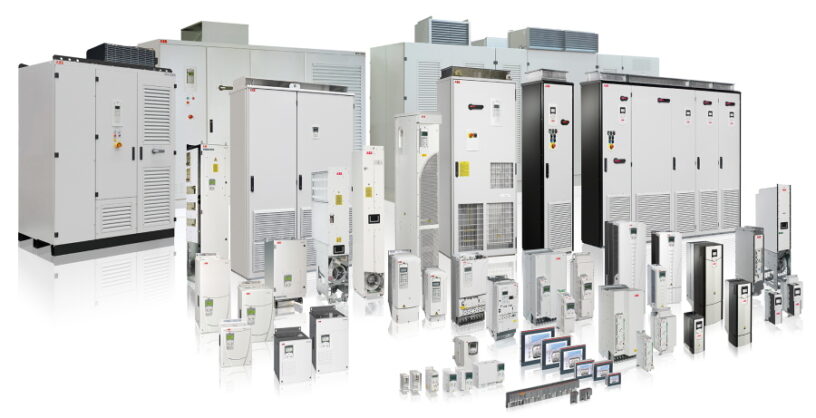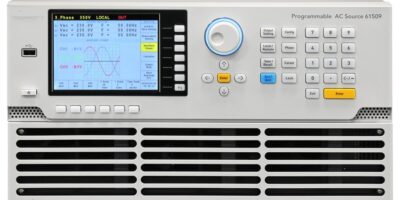Introduction
Drive inverters, also known as motor inverters or variable frequency drives (VFDs), are crucial components in modern electrical and automation systems. They control the speed, torque, and direction of electric motors by converting fixed-frequency AC power to variable-frequency AC power. Drive inverters are widely used in various applications, including industrial automation, HVAC systems, electric vehicles, and renewable energy systems. This overview provides insights into the current market dynamics, demand and supply factors, key growth opportunities, reasons to purchase market reports, competitive strategies, and future development trends and forecasts for the drive inverter market.
Market Overview
Definition and Functionality
Drive inverters are electronic devices that modulate the power supply to electric motors, allowing precise control over motor speed and performance. They enhance energy efficiency, reduce mechanical wear, and improve process control across diverse applications. Drive inverters are available in different types, including AC drives, DC drives, and servo drives, each tailored to specific use cases.
Market Size and Growth
As of 2024, the global drive inverter market is experiencing significant growth, driven by the increasing adoption of automation, the rise of electric vehicles, and the expansion of renewable energy projects. The market size is estimated to be around $30 billion and is projected to grow at a CAGR of approximately 7% from 2024 to 2028, reaching nearly $42 billion by 2028. This growth is fueled by advancements in drive technology, the need for energy-efficient solutions, and regulatory support for sustainable practices.
Demand Factors
1. Industrial Automation
The ongoing trend towards industrial automation is a major driver for the drive inverter market. Industries are increasingly adopting automation to enhance productivity, efficiency, and precision in their operations. Drive inverters play a pivotal role in controlling motors used in conveyors, pumps, fans, and other automated machinery, enabling precise speed and torque control. The demand for drive inverters is expected to continue rising as manufacturers seek to optimize their production processes and reduce operational costs.
2. Electric Vehicles (EVs)
The rapid growth of the electric vehicle market is significantly boosting the demand for drive inverters. In EVs, drive inverters convert DC power from the battery to AC power for the motor, controlling the vehicle’s speed and acceleration. As governments worldwide promote the adoption of electric vehicles to reduce emissions and dependency on fossil fuels, the demand for high-efficiency drive inverters is surging. Technological advancements in EV drive systems are further driving market growth.
3. Renewable Energy Systems
The expansion of renewable energy installations, particularly solar and wind power, is driving the need for advanced drive inverters. In these systems, inverters are essential for converting variable power outputs into stable, usable electricity. Drive inverters facilitate grid integration and enhance the efficiency of renewable energy systems by optimizing power conversion and reducing energy losses. The growing focus on sustainable energy solutions is contributing to the increased adoption of drive inverters.
4. HVAC and Building Automation
Drive inverters are extensively used in heating, ventilation, and air conditioning (HVAC) systems to control fan and pump speeds, improving energy efficiency and reducing operational costs. The trend towards smart buildings and energy-efficient infrastructure is driving the demand for advanced drive inverters with integrated control features. These inverters help maintain optimal environmental conditions while minimizing energy consumption.
Supply Factors
1. Technological Advancements
Advancements in semiconductor technology, power electronics, and digital control systems have enhanced the performance and efficiency of drive inverters. Innovations such as silicon carbide (SiC) and gallium nitride (GaN) semiconductors are enabling higher efficiency, reduced size, and improved thermal management in drive inverters. These technological advancements are contributing to the increased availability and adoption of next-generation drive inverters.
2. Expansion of Manufacturing Capacities
Manufacturers are expanding their production capacities to meet the growing demand for drive inverters. Investments in new production facilities, automation in manufacturing processes, and strategic partnerships are helping to scale up production and reduce lead times. This expansion is crucial to addressing the rising demand from various industries and ensuring a stable supply of drive inverters.
3. Supply Chain Resilience
The drive inverter market is benefitting from efforts to enhance supply chain resilience, particularly in response to disruptions caused by global events such as the COVID-19 pandemic. Companies are diversifying their supply chains, increasing local sourcing, and building strategic inventories to mitigate supply chain risks. These measures are essential for maintaining a consistent supply of drive inverters and meeting customer demand.
4. Standardization and Compliance
The development of industry standards and compliance with regulatory requirements are critical factors in the drive inverter market. Standards such as IEC 61800 for adjustable speed electrical power drive systems ensure interoperability, safety, and performance. Compliance with these standards is driving the adoption of standardized drive inverters and facilitating their integration into various applications.
Key Growth Opportunities
1. Integration with IoT and Industry 4.0
The integration of drive inverters with the Internet of Things (IoT) and Industry 4.0 technologies presents significant growth opportunities. IoT-enabled drive inverters can provide real-time data on motor performance, energy consumption, and system health, enabling predictive maintenance, remote monitoring, and enhanced process optimization. This integration supports smart manufacturing and improves overall operational efficiency.
2. Expansion into Emerging Markets
Emerging markets, particularly in Asia-Pacific, Latin America, and Africa, offer substantial growth potential for drive inverters. Rapid industrialization, urbanization, and infrastructure development in these regions are driving the demand for advanced motor control solutions. Companies can capitalize on these opportunities by expanding their market presence, establishing local partnerships, and adapting products to meet regional requirements.
3. Development of Energy-Efficient Inverters
There is a growing demand for energy-efficient drive inverters that align with global sustainability goals and regulatory mandates. Developing inverters with higher efficiency, reduced power losses, and advanced energy-saving features can attract customers seeking to minimize energy consumption and reduce operating costs. Energy-efficient inverters are particularly valuable in applications where energy efficiency is a critical concern, such as HVAC systems and renewable energy installations.
4. Adoption in New Applications
Expanding the application scope of drive inverters beyond traditional uses presents a promising growth avenue. Potential new applications include robotics, aerospace, and medical devices, where precise motor control and energy efficiency are essential. By diversifying their product offerings and exploring untapped markets, companies can drive new revenue streams and enhance market presence.
5. Focus on Customization and User Experience
Offering customizable drive inverters tailored to specific industry needs can provide a competitive edge. Customers increasingly seek solutions that integrate seamlessly into their existing systems and offer user-friendly interfaces. By focusing on customization and enhancing the user experience, manufacturers can meet the diverse requirements of different sectors and strengthen customer relationships.
Why Purchase the Report?
1. Comprehensive Market Insights
Investing in a market report on drive inverters provides comprehensive insights into the current market landscape, including detailed analysis of market size, growth trends, and competitive dynamics. This information is crucial for understanding the market’s trajectory and identifying key opportunities for investment and expansion.
2. Strategic Decision-Making
Market reports equip businesses with the data and analysis needed to make informed strategic decisions. Whether it’s entering new markets, developing new products, or optimizing existing operations, having access to accurate market intelligence enables companies to make well-informed choices that align with their strategic objectives.
3. Competitive Analysis
A market report offers a thorough analysis of the competitive landscape, including profiles of key players, their market shares, and their strategies. This information is valuable for benchmarking against competitors, understanding their strengths and weaknesses, and identifying areas for differentiation.
4. Identification of Growth Opportunities
Market reports highlight emerging trends, technological advancements, and potential growth opportunities. By identifying these opportunities, businesses can develop strategies to capitalize on new market segments, technological innovations, and changing customer demands.
5. Risk Mitigation
Understanding the challenges and risks associated with the drive inverter market is essential for effective risk management. Market reports provide insights into potential market disruptions, regulatory changes, and other risks, allowing companies to develop contingency plans and mitigate potential impacts.
6. Investment Justification
For businesses seeking investment or expansion, market reports provide the data needed to justify investments to stakeholders. The detailed market analysis, growth forecasts, and competitive insights support the business case for investing in new projects, technologies, or market expansions.
Receive the FREE Sample Report of Drive Inverter Market Research Insights @ https://stringentdatalytics.com/sample-request/drive-inverter-market/11208/
Market Segmentations:
Global Drive Inverter Market: By Company
• Siemens
• Delta Group
• Mitsubishi Electric
• Hitachi
• Sew-Eurodrive
• KB Electronics
• Omron
• Yaskawa
• Parker
• Gefran
• Rich Electric
• Sumitomo Drive Technologies
• Lenze Gruppe
• Brook Crompton
• Fuji Electric
• Shenzhen M-Driver Technology
• Zhejiang New Folinn Electric
Global Drive Inverter Market: By Type
• AC Drive Inverter
• DC Drive Inverter
Global Drive Inverter Market: By Application
• Industrial
• Commercial
• Residential
• Others
Regional Analysis of Global Drive Inverter Market
All the regional segmentation has been studied based on recent and future trends, and the market is forecasted throughout the prediction period. The countries covered in the regional analysis of the Global Drive Inverter market report are U.S., Canada, and Mexico in North America, Germany, France, U.K., Russia, Italy, Spain, Turkey, Netherlands, Switzerland, Belgium, and Rest of Europe in Europe, Singapore, Malaysia, Australia, Thailand, Indonesia, Philippines, China, Japan, India, South Korea, Rest of Asia-Pacific (APAC) in the Asia-Pacific (APAC), Saudi Arabia, U.A.E, South Africa, Egypt, Israel, Rest of Middle East and Africa (MEA) as a part of Middle East and Africa (MEA), and Argentina, Brazil, and Rest of South America as part of South America.
Click to Purchase Drive Inverter Market Research Report @ https://stringentdatalytics.com/purchase/drive-inverter-market/11208/
Competitive Strategies
1. Product Innovation
Product innovation is a key competitive strategy in the drive inverter market. Companies are focusing on developing advanced drive inverters with enhanced performance, energy efficiency, and integration capabilities. Innovations such as multi-level inverters, regenerative drives, and inverters with built-in safety features are gaining traction. By continuously improving their product offerings, companies can differentiate themselves and capture a larger market share.
2. Strategic Partnerships and Collaborations
Collaborating with technology partners, suppliers, and industry stakeholders is a common strategy to enhance product development and market reach. Strategic partnerships can provide access to new technologies, streamline supply chains, and expand distribution networks. Companies are also partnering with research institutions and universities to drive innovation and stay ahead of market trends.
3. Geographic Expansion
Expanding into new geographic markets is a crucial strategy for growth. Companies are targeting emerging markets with high industrial growth and increasing demand for automation solutions. Establishing local manufacturing facilities, distribution centers, and service networks helps companies cater to regional demands more effectively and build a strong market presence.
4. Focus on Customer Support and Services
Providing excellent customer support and services is essential for building long-term relationships and ensuring customer satisfaction. Companies are enhancing their after-sales support, offering training programs, and providing comprehensive maintenance services. This focus on customer service helps retain existing customers and attract new ones, contributing to sustained market growth.
5. Cost Optimization and Efficiency
Cost optimization is a key strategy to improve profitability and competitiveness. Companies are investing in lean manufacturing practices, supply chain optimization, and efficient production processes to reduce costs. Additionally, adopting advanced automation and digitalization in manufacturing helps improve operational efficiency and reduce lead times.
Development Trends
1. Digital Transformation and Smart Inverters
The drive inverter market is undergoing a digital transformation, with increasing adoption of smart inverters that offer advanced control features, real-time data monitoring, and connectivity. Smart inverters are equipped with digital interfaces, IoT capabilities, and software integration, enabling remote diagnostics, predictive maintenance, and enhanced system optimization. This trend aligns with the broader movement towards Industry 4.0 and smart manufacturing.
2. Wireless and Modular Solutions
The development of wireless and modular drive inverters is gaining momentum. Wireless inverters eliminate the need for physical connections, offering greater flexibility in installation and reducing wiring complexity. Modular inverters allow for easy scalability and customization, making them suitable for diverse applications. These solutions cater to the growing demand for adaptable and user-friendly drive systems.
3. Focus on Energy Efficiency and Sustainability
Energy efficiency and sustainability are becoming central to drive inverter development. Manufacturers are focusing on designing inverters with higher efficiency, lower energy losses, and reduced environmental impact. Features such as regenerative braking, energy-saving modes, and eco-friendly materials are being incorporated into drive inverter designs to meet regulatory standards and customer preferences.
4. Enhanced Integration with Renewable Energy Systems
Drive inverters are increasingly being integrated with renewable energy systems to optimize power conversion and enhance grid stability. Inverters for solar and wind applications are being designed to handle the variability of renewable energy sources and provide efficient power management. This integration supports the growth of renewable energy installations and contributes to the global transition towards clean energy.
5. Advanced Control Algorithms and Software
Advancements in control algorithms and software are enhancing the performance and capabilities of drive inverters. Modern control algorithms provide precise motor control, improved dynamic response, and better fault tolerance. Software enhancements enable advanced features such as real-time data analysis, remote updates, and integration with automation systems. These developments are driving the adoption of next-generation drive inverters with enhanced functionalities.
Forecasts
1. Market Size and Growth
The global drive inverter market is projected to grow from approximately $30 billion in 2024 to nearly $42 billion by 2028, with a CAGR of around 7% during the forecast period. This growth is driven by the increasing adoption of automation, the rise of electric vehicles, and the expansion of renewable energy projects.
2. Regional Outlook
- North America: North America will remain a significant market for drive inverters, driven by advancements in industrial automation and the adoption of electric vehicles. The U.S. and Canada are key contributors to market growth in this region.
- Europe: Europe will continue to be a strong market for drive inverters, with a focus on energy efficiency and sustainability. Germany, France, and the UK are leading markets, supported by investments in renewable energy and smart infrastructure.
- Asia-Pacific: Asia-Pacific is expected to experience the fastest growth, fueled by rapid industrialization, increasing automation, and expanding renewable energy installations. China, India, and Japan are key markets driving regional growth.
- Latin America: The market in Latin America is expected to grow steadily, supported by industrial development and the adoption of advanced automation solutions. Brazil and Mexico are prominent markets in this region.
- Middle East & Africa: Growth in the Middle East & Africa region will be driven by investments in industrial infrastructure and renewable energy projects. The focus on modernizing industrial processes will contribute to the demand for drive inverters.
3. Technology Trends
- Digital and Smart Inverters: The adoption of digital and smart drive inverters with advanced control features and connectivity will accelerate, providing enhanced monitoring, diagnostics, and integration capabilities.
- Wireless and Modular Inverters: Wireless and modular drive inverters will gain traction, offering increased flexibility, scalability, and ease of installation.
- Energy-Efficient and Sustainable Inverters: The development of energy-efficient and sustainable drive inverters will become a priority, aligning with global sustainability initiatives and regulatory mandates.
- Integration with Renewable Energy Systems: Drive inverters will increasingly be integrated with renewable energy systems, optimizing power conversion and enhancing grid stability.
About Stringent Datalytics
Stringent Datalytics offers both custom and syndicated market research reports. Custom market research reports are tailored to a specific client’s needs and requirements. These reports provide unique insights into a particular industry or market segment and can help businesses make informed decisions about their strategies and operations.
Syndicated market research reports, on the other hand, are pre-existing reports that are available for purchase by multiple clients. These reports are often produced on a regular basis, such as annually or quarterly, and cover a broad range of industries and market segments. Syndicated reports provide clients with insights into industry trends, market sizes, and competitive landscapes. By offering both custom and syndicated reports, Stringent Datalytics can provide clients with a range of market research solutions that can be customized to their specific needs.
Reach US
Stringent Datalytics
+1 346 666 6655
Social Channels:
Linkedin | Facebook | Twitter | YouTube




Leave a Reply